ALTERED
JUSTIN A. CARNEY

Justin A. Carney. Last Meal v2, 2022. Archival Pigment Print, 17 x 22 inches. Edition of 10 + 4 AP. $1200, Framed.
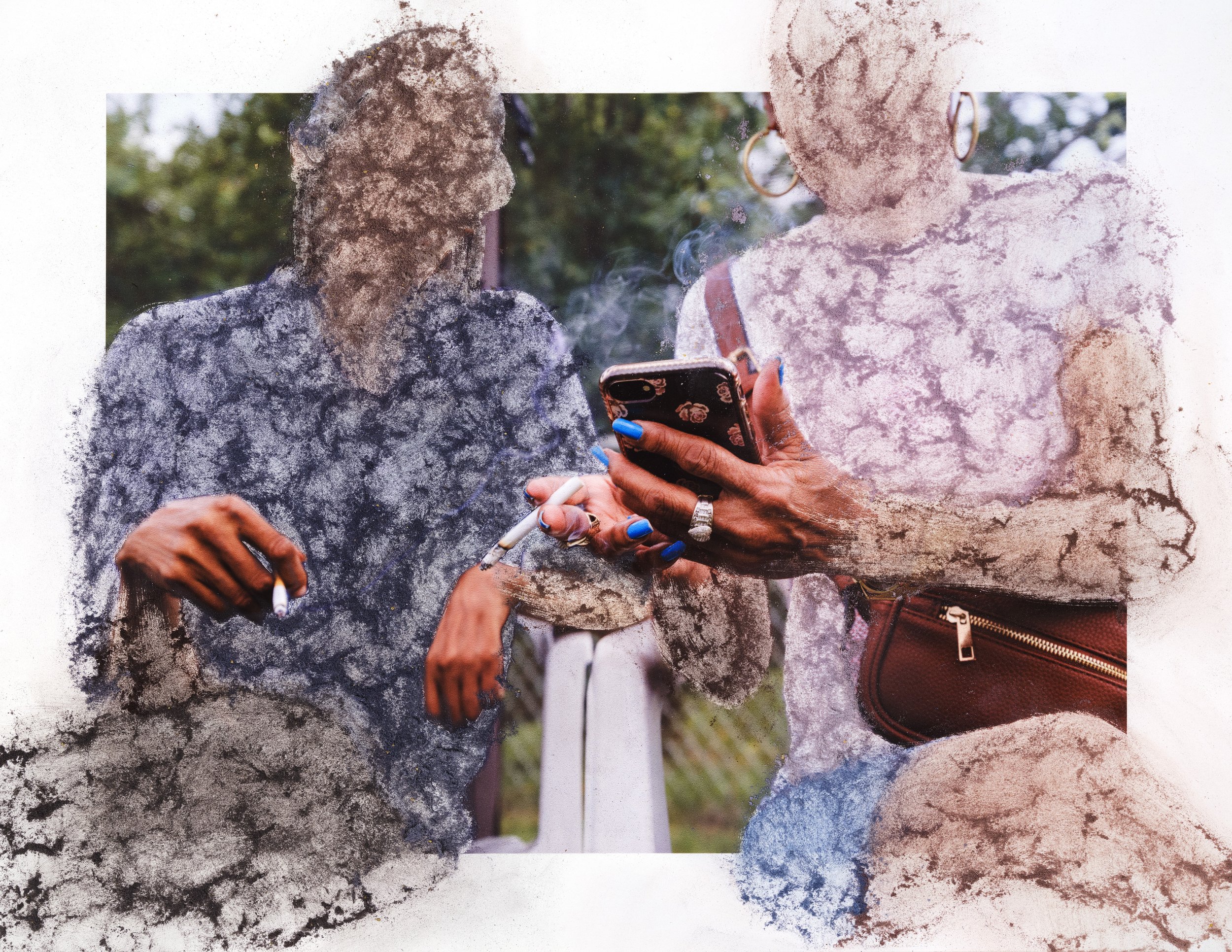
Justin A. Carney. Petals, 2022. Archival Pigment Print, 17 x 22 inches. Edition of 10 + 4 AP. $1200, Framed.

Justin A. Carney. Playground, 2021. Archival Pigment Print, 17 x 22 inches. Edition of 10 + 4 AP, $1200, Framed.

Justin A. Carney. Last Meal v2, 2022. Archival Pigment Print, 22 x 17 inches, Edition of 10 + 4 AP, $1200, Framed
and the disappearing has become uses photography, mono-printing techniques, and erasing with sandpaper in order to embody the process of forgetting. The photographs are of important everyday moments of family gatherings, events, and places. The gestural act of sanding and painting on the photographic image works to claim this unconscious process of forgetting as a necessary part of life, of me, rather than as something harmful. Death and oblivion are occurrences of disintegration but not of destruction. By mixing elements of control and uncontrol, creating abstractions and photographic representations, the work exists on two levels: the physical and the mental, both affecting each other simultaneously. Abstraction elicits emotion, reaction, feeling, an inward realm of experience and representation grounds those emotions in a lived experience.
Justin A. Carney is an artist and educator that uses autobiographical photography to question how death and grief affect familial connections—the bonds that keep a family together and cause them to separate, and how grief shapes an individual. Much of Carney’s artistic practice deals with confronting and exposing grief surrounding death to create an avenue for not only himself but also for others to find healing and cope with the deaths in their lives.
Carney is originally from Baltimore, Maryland. He received his MFA in Photography at Indiana University Bloomington. He holds a BFA in Photography from Pennsylvania College of Art &. Design. Carney is the recipient of the Bloomington Arts Commission 2022 Emerging Artist Grant, he has been awarded the First Place Single Image Award from LensCulture Art Photography Awards 2023, and the Best in Show Award in the 2020 Emerging Vision, Colorado Photographic Arts Center Biennial Student Show. Carney’s work has been exhibited nationally and internationally.
ELI CRAVEN

Eli Craven. Soap Opera #10, 2023. Archival Inkjet Print, Walnut Panel and Frame, 24.75 x 18.75 inches, Framed. Unique. $2500, Framed.

Eli Craven. Soap Opera #4, 2023. Archival Inkjet Print, Walnut Panel and Frame, 24 × 26 inches. Unique. $2250, Framed.
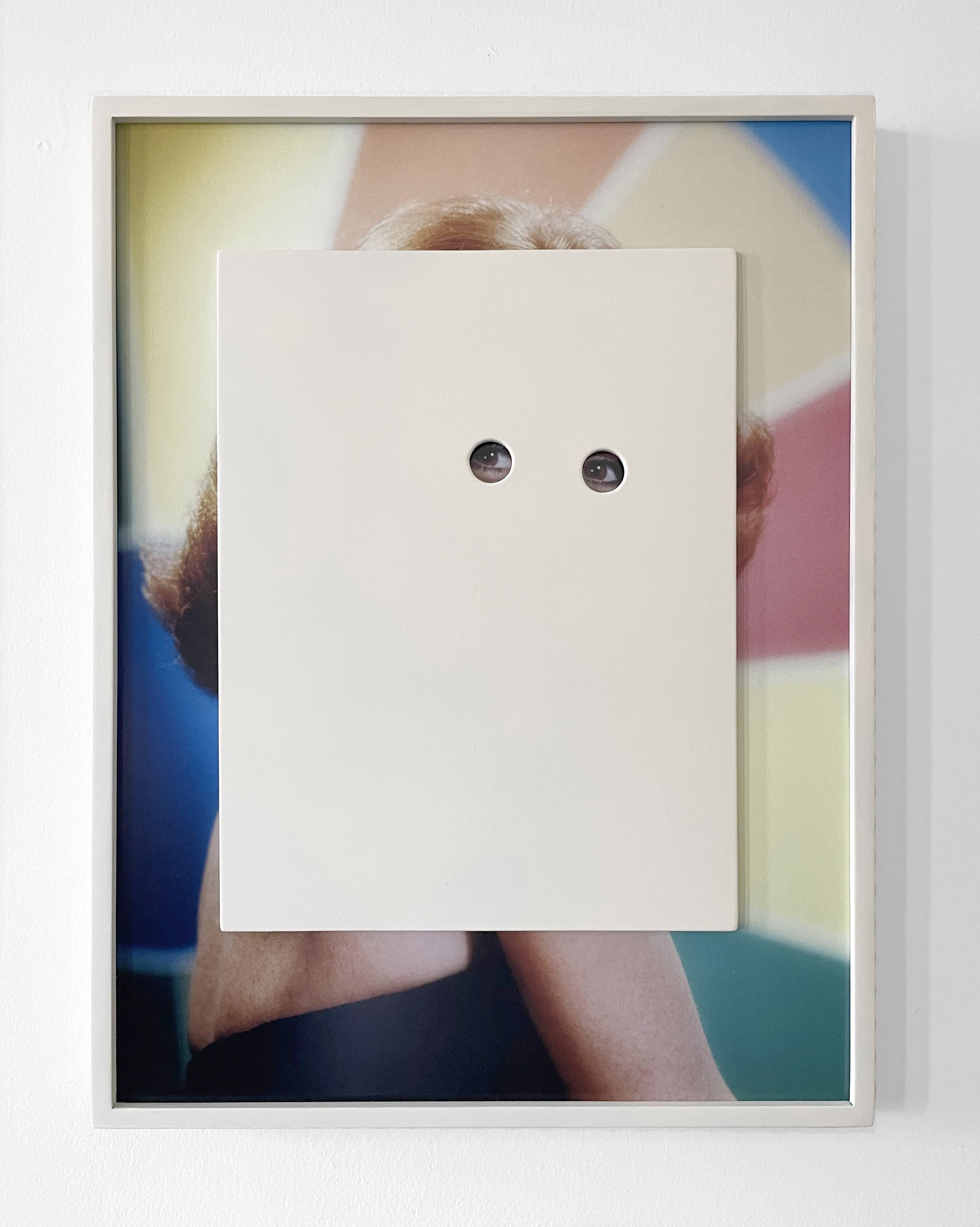
Eli Craven. Soap Opera #5, 2023. Archival Inkjet Print, Walnut Panel and Frame, 24 × 18 inches. Unique. $2000, Framed.
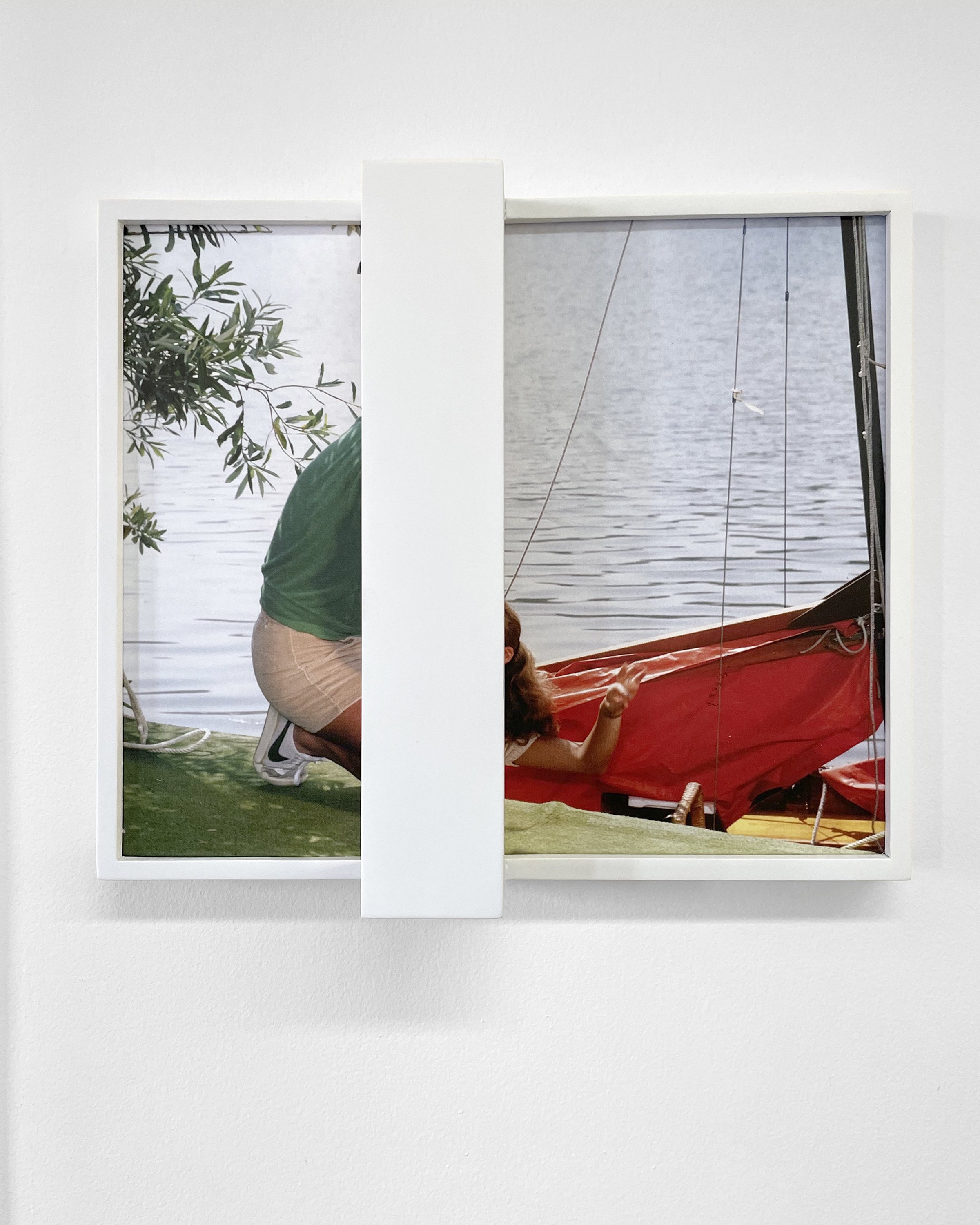
Eli Craven. Soap Opera # 7. 2023. Archival Inkjet Print, Brass Sheets, and Frame, 16 x 18.75 x 4 inches. Unique. $2500, Framed.

Eli Craven. Soap Opera #2, 2022. Archival Inkjet Print and Artist’s Frame, 16 x 20.5 inches. Unique. $1800, Framed.
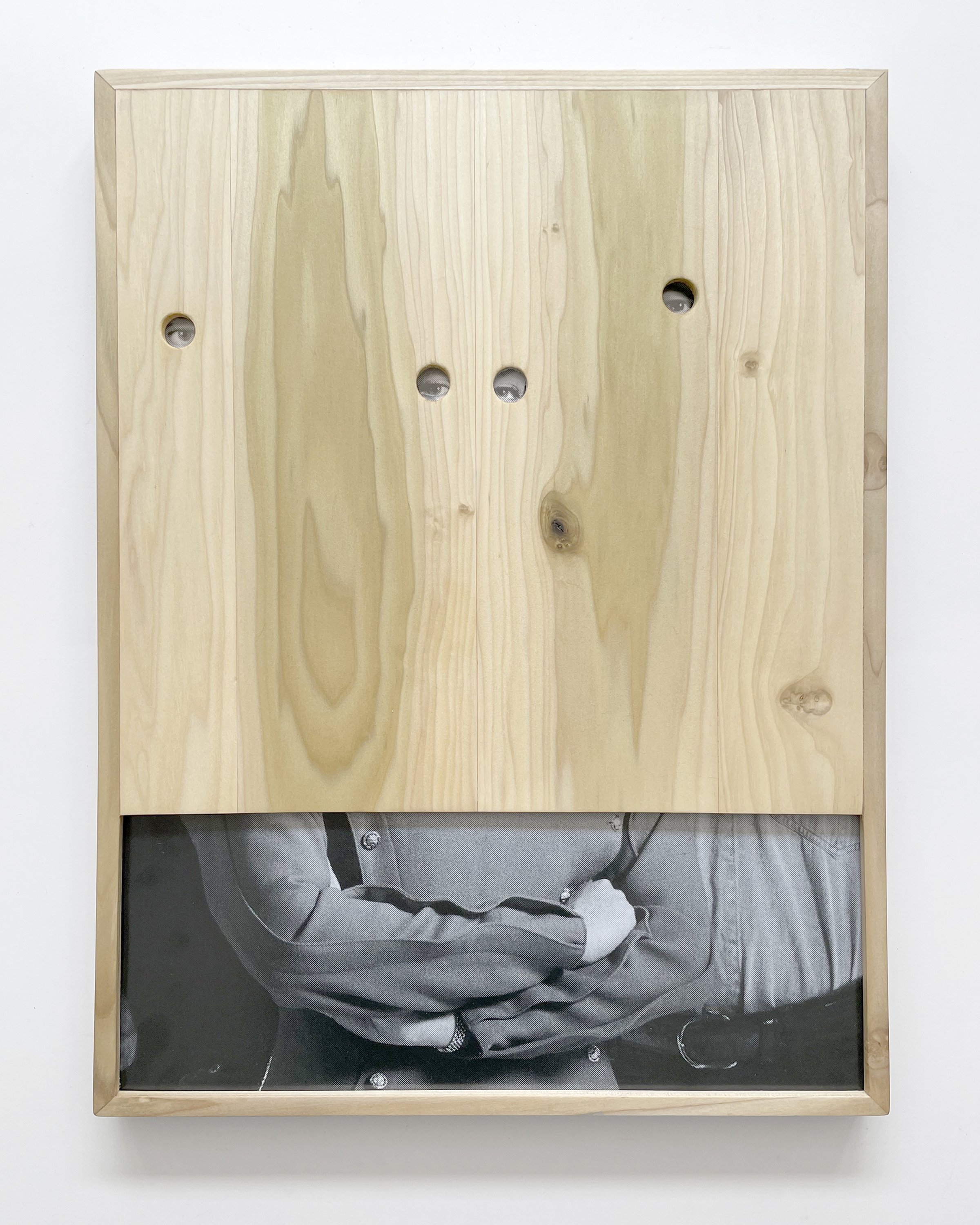
Eli Craven. Soap Opera #11, 2023. Archival Inkjet Print, Poplar Panel and Frame, 24.25 x 18 inches. Unique. $2250
Soap Opera is an ongoing series composed of still images from daytime soap operas transformed through the artist’s sculptural frames. The melodrama of the soap opera genre has the power to not only reflect our cultural norms and values, but to shape them as well. The frames are constructed with selective peepholes and mirrored metal panels to conceal and fragment portions of the original scene, potentially inviting the viewer to participate in an exchange of looking. The viewer’s participation is essential, completing the picture through their point of view and imagination. Ultimately, the Soap Opera works manifest television fantasy into physical object in order to explore the act of looking and the desire to see what is hidden.
Eli Craven (b. 1979) is an artist based in Lafayette, Indiana where he is an Assistant Professor of Photography at Purdue University. Craven’s research resides in the critical investigation of the image and its relationship to ideologies of sexuality, desire, and death. His work is exhibited nationally and internationally, most recently at KlompChing Gallery in Brooklyn, New York, at the South Bend Museum of Art's 31st Biennial, and at Feinkunst Krüger Gallery in Hamburg, Germany. His work has also been widely published. Select publications and clients include Philosophie Magazine, The Journal of Curriculum and Pedagogy, Gestalten Publishing Berlin, Penguin Random House Barcelona, and The Paris National Opera.
ALMA HASER
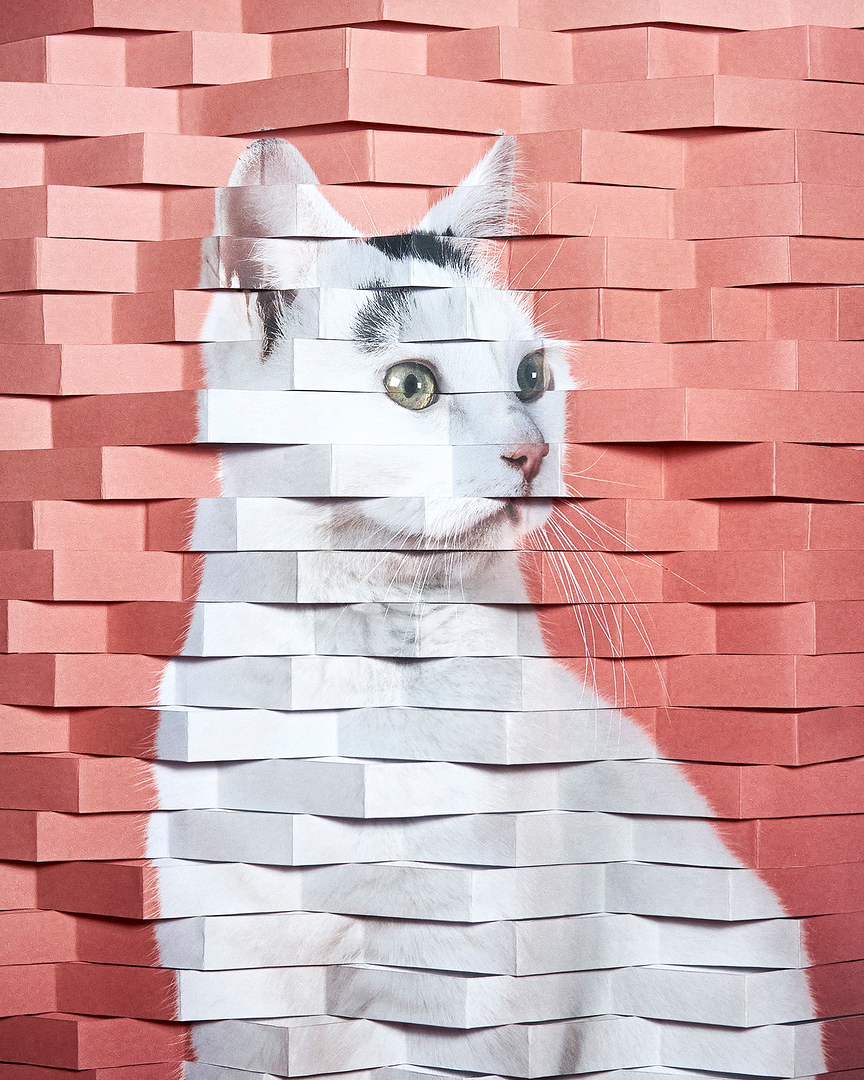
Alma Haser, To Have A Cat, 2023. Archival Pigment Prints, Layered and Cut, 18.1 x 23.6 inches. Edition #1 of 6. $2250, Framed.

Alma Haser, Chamelaucium, 2018. Archival Pigment Prints, Layered and Cut, 13.75 x 8.5 inches. Edition #2 of 7. $2200, Framed.

Alma Haser, Monstera Deliciosa, 2018. Archival Pigment Prints, Layered and Cut, 13.75 x 8.5 inches. Edition #2 of 7. $2200, Framed.
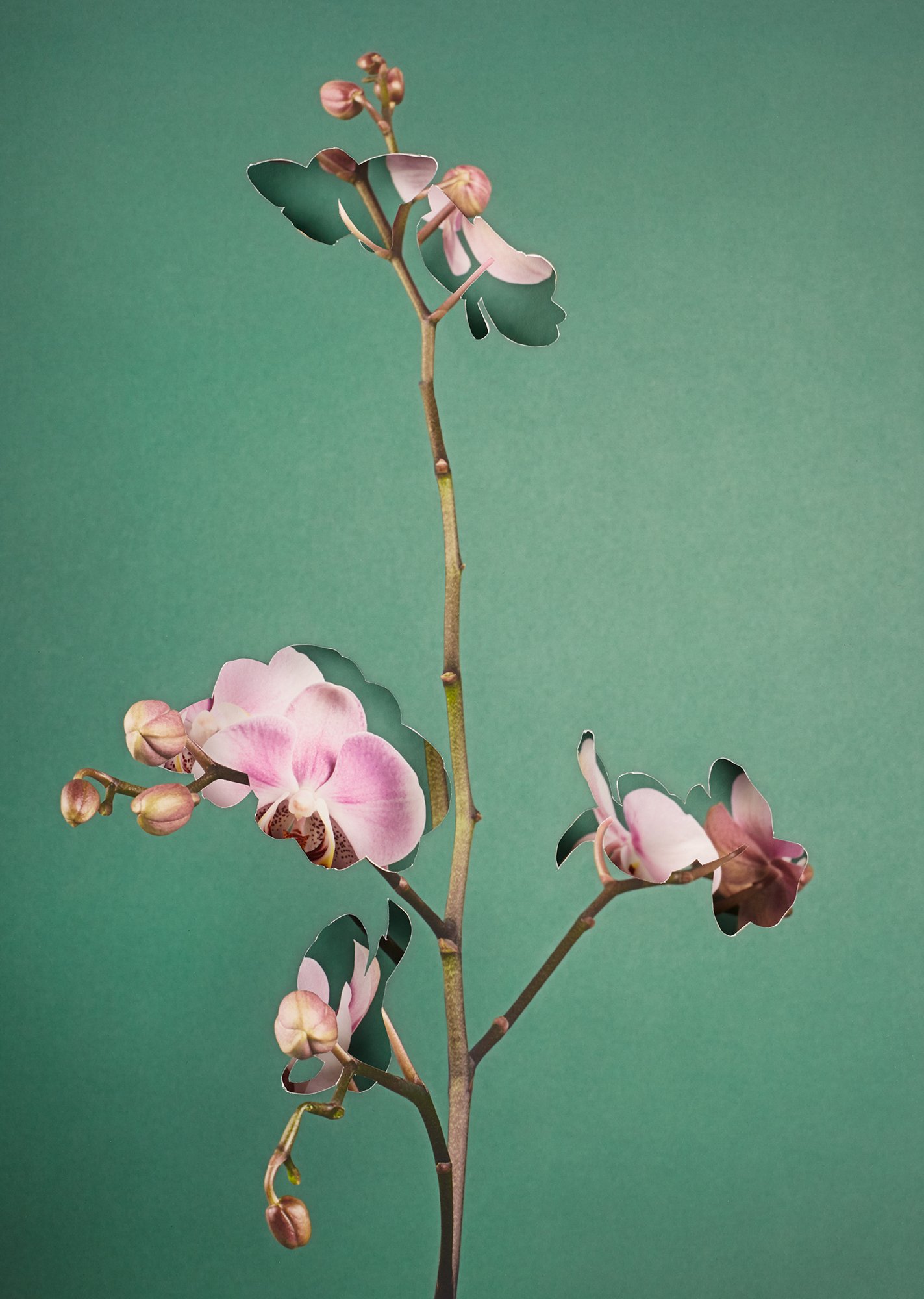
Alma Haser, Phalaenopsis, 2018. Archival Pigment Prints, Layered and Cut, 13.75 x 8.5 inches. Edition #3 of 7. $2500, Framed.
Alma Haser expands the dimensions of traditional portrait photography, taking her photographs further by using inventive paper-folding techniques, collage, and mixed media to create layers of intrigue around her subjects, manipulating her portraits into futuristic paper sculptures.
Haser's project, Pseudo, offers a fresh perspective on conventional still-life photography with a combination of playfulness and therapeutic depth. This approach blurs the line in distinguishing which botanical still-life images are real and which are artificially crafted, resulting in a captivating interplay between authenticity and artifice.
Alma Haser is based in SouthEast England and has won many awards for her work, including Magenta Foundation's Bright Spark Award for her Cosmic Surgery series (the basis of a successful self-published book project). Her piece The Ventriloquist won fourth prize for the Taylor Wessing Portrait Prize at the National Portrait Gallery. Alma also won the PDN Photo Annual Award for her Eureka Effect series. Her work has been exhibited worldwide.
ADRIENE HUGHES

Adriene Hughes, The Secret Life of Trees II / Image #02, 2021. Archival Pigment Print on Cotton Rag with Wool Felt, 21 × 28 inches. Unique. $3500, Framed.

Adriene Hughes, The Secret Life of Trees II / Image #05, 2021. Archival Pigment Print on Cotton Rag with Wool Felt, 21 × 28 inches. Unique. $3500, Framed.
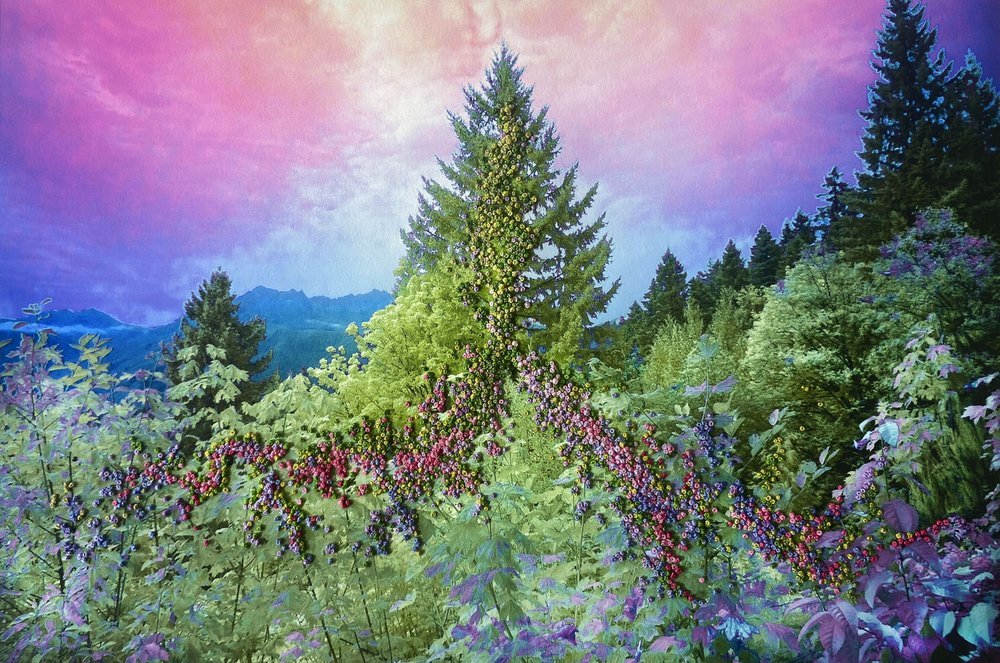
Adriene Hughes, The Secret Life of Trees, Image #01.1, 2022-23. Archival Pigment Print on Cotton Rag with Cotton Floss, 19 × 26 inches. Unique. $3500, Framed.

Adriene Hughes, The Secret Life of Trees, Image #2.2, 2022-23. Archival Pigment Print on Cotton Rag with Cotton Floss, 21 × 26 inches. Unique. $3500, Framed.
The Secret Life of Trees began as a series of photographs in 2017 taken during a forest fire in Washington State with the use of an infrared camera. The colors are an anomaly: they are the product of infrared light bending through smoke, combined with a chemical reaction in the leaves that registered a forest in the throes of distress. Scientists agree that forests are made up of communities of trees and plants that communicate with each other, and they interconnect through a fungal network that forms bonds between the trees’ roots, a phenomenon known as the mycorrhizal network. This network of fungi can spread over many miles, connecting thousands of trees to one another. The resulting colors in these photos, I believe, is the recording of this communication as the trees warned and defended each other of the impending fire.
The intervention of embroidery into this work is my vision of what that fungal network—the biochemical and electrical signals—would look like if it were visible to the eye. Embroidery, seen as a technique historically reserved by the practices of women, is to lay claim to the photographic landscape under my terms as a craft-maker. I also believe the earth speaks to us in colors much like the chakras of Vedas philosophy: green represents the heart, blue the center of communication and red is the sacral root which ties us to the earth. The colors created by infrared technology, and the thread I stitched into these photographs, was to tie my physical body to the etherical, and the etherical into the landscape.
Adriene Hughes is a San Diego based fine art photographer with an MFA from The School of the Museum of Fine Arts, Boston, and Tufts University. She is a multi-media artist whose current body of work is based within the genre of grand landscape and the effects of global warming on the environment through the use of infrared technology, photography, and video installation.
Hughes' photography has been exhibited nationally and internationally, including video installation at Venice Biennial at the Scuola Grande della Misericordia, and the Lishui International Photo Festival, China. Recent exhibitions include BlackBox Projects London, Klompching Gallery New York, Centro Cultural (CECUT) Tijuana, Mexico, California Center for the Arts, The Center for Fine Arts Photography at Ft. Collins, Sawtooth ARI Tasmania, Microwave International New Media Festival Hong Kong, and Simultan Festival Romania. Her photographs have been featured in many publications including Wired, Harper’s Magazine, PDN, Phroom Magazine, German Foto, Fraction Magazine, Humble Arts Foundation, Don’t Take Pictures, Lenscratch, PhotoPhore, FeatureShoot, and Crusade For Art. She is also the recipient of the 2018 Rhonda Wilson Award with Klompching Gallery, a 2018 Critical Mass Top 50 recipient, and 2020 Critical Mass finalist. Public Art includes San Diego International Airport and the Boston Convention Center. She has recently installed a 144 ft. large-scale photographic mural project at the San Diego International Airport, as well as an environmental infrared video installation of the Southern California desert landscape.
